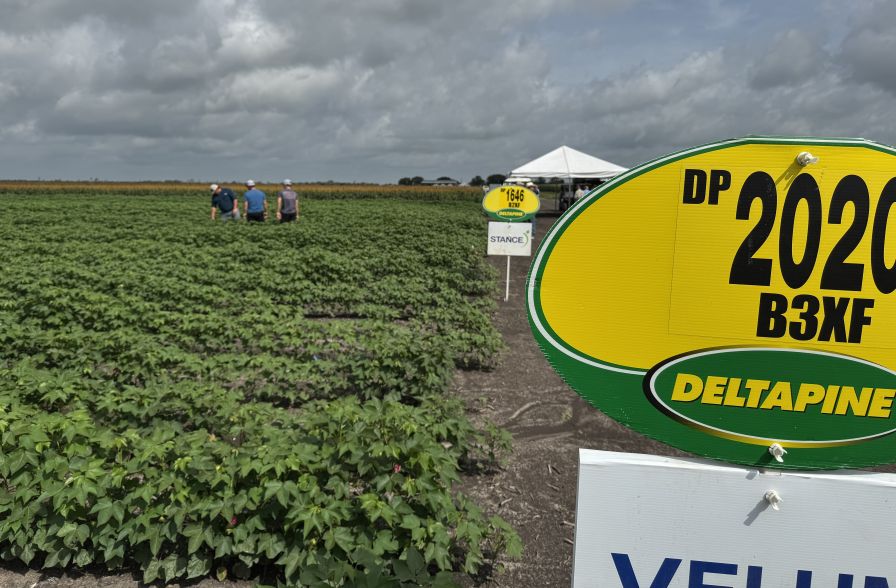Shurley on Cotton: Updated Market Numbers, Thoughts for 2015 Planning
By Dr. Don Shurley
As expected, the U.S. crop got smaller.
USDA’s September crop estimate is 16.54 million bales – down almost one million bales from the August estimate. Acreage planted was reduced, abandonment was increased slightly, and yield was lowered. As a result of the smaller crop, projected U.S. exports for the 2014 crop year were reduced 700,000 bales.
The India crop was increased one million bales, while the China crop was unchanged. World Usage (demand) was lowered about 500,000 bales. Projected 2014/15 ending stocks for China were increased, as were World Stocks and stocks outside of China.
Overall, the report is probably neutral to slightly bearish. The smaller U.S. crop should provide some support for prices, but the increase in total World production, reduction in Use, and increase in stocks may also weigh on the market. So far today (September 11), prices (Dec14 futures) are currently in the 68-cent area.
There is likely some resistance at this 67 to 68 cent area. I don’t know that there are currently enough positives to break through and move closer to the 70’s, but hopefully today’s numbers will at least solidify the bottom and the trading range around 65 cents.
Early Thinking About 2015
Prices for the 2015 crop (Dec15 futures) are currently around 69 cents/lb. Everyone’s first thought is “We won’t/can’t plant cotton for that.” Perhaps so, but what else will be planted? Prices for all row crops are down compared to previous years. There is beginning to be thought circulating that acreage could be down, but maybe not as much as you would think.
Based solely on relative price ratios, soybeans might be the only still somewhat-shining star. Corn has actually slipped so much that cotton has gained in relation to corn. Soybeans and corn represent agronomic and economic alternatives to cotton in some areas of the Cotton Belt, but not all. Peanuts are also an alternative in some areas.
2015 cotton at 70 cents would be disappointing two years in a row, but there are potential positives out there that the market has chosen to ignore for now. For example, cotton prices could improve if acreage is reduced and World production continues to trend down and demand continues to improve. The narrowing of this “gap” is still tempered by the large level of Chinese stocks, but much will depend on Chinese policy and the unsure quality of that stockpile.
I believe most, but not all, cotton-producing farms likely have more cotton base than any other crop base. Cotton base is now known as Generic Base. Any and all acreage planted to a “covered commodity” (corn, soybeans, grain sorghum, wheat, peanuts, etc. – excluding cotton) will automatically be assigned by FSA to the Generic Base up to the maximum of the Generic Base. These acres planted on Generic Base will be eligible for any PLC or ARC payment.
Therefore, it seems to me that potential PLC and ARC payments should be considered when making planting decisions on Generic Base. But, this is a difficult and near impossible task, particularly for ARC, since any payment depends in part on how actual yield compares to the expected yield.
Perhaps it’s better to make planting decisions, as always in the past, based on crop net returns excluding payments, and just let the payments be what they will be. It depends on how comfortable you are and how much risk you are willing to take in projecting PLC and ARC.
Farm Bill Cotton Update
STAX is the new “safety net” for cotton beginning with the 2015 crop. But, STAX is optional – cotton producers may elect STAX or SCO or nothing. STAX is a county/area revenue policy that is “stacked” on top of the farms existing (Companion) yield or revenue policy. It covers “shallow losses” of up to 20 percent of the expected county/area revenue. Producers, as they already do, must decide what type and level of Companion Policy they want, and then determine if they want STAX or SCO – or neither.
STAX is triggered based on what happens to county/area revenue, not your actual farm experience. The STAX decision and purchase is year to year. You will purchase STAX through your insurance provider, and it is expected that this decision will have to be made by your normal sales closing deadline.
Cotton producers are reminded that sign-up for the Cotton Transition Assistance Program (CTAP) continues through October 7 at their local FSA office. This payment will be 9 cents per pound times the farm’s cotton Direct Payment Yield on 60 percent of the farm’s 2013 cotton base acres. This payment, however, is subject to a budget sequestration cut of 7.2 percent if the application is approved before October 1 and 7.3 percent if approved after October 1.
That 0.1 percent may not sound like much, but it may be enough to pay for a jug of herbicide or something else. Be sure to apply before October 1 to avoid the extra reduction.
Shurley is Professor Emeritus of Cotton Economics, Department of Agricultural and Applied Economics, University of Georgia









